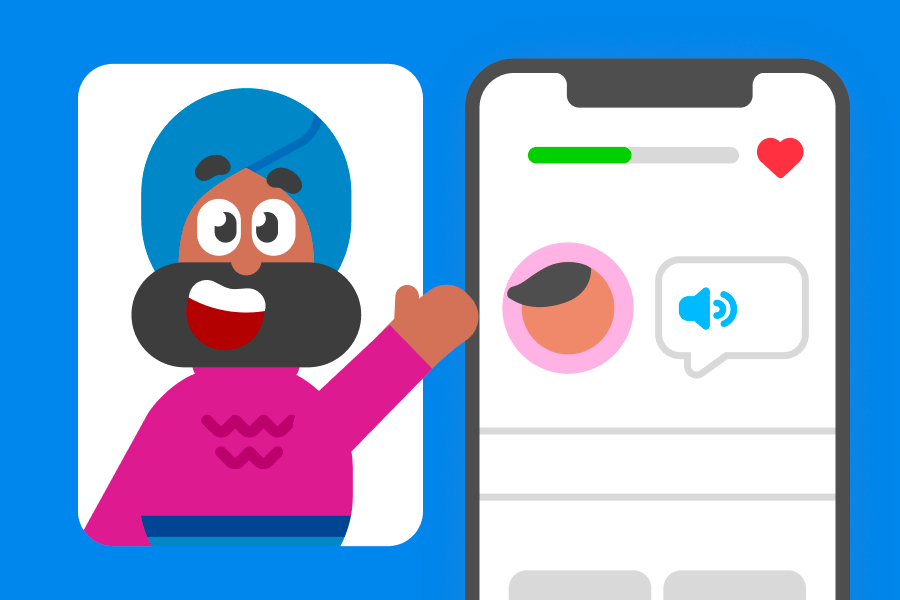Hellllooooo! Hi! What’s up? There are so many different ways to greet someone in English and start a conversation. Hello is the most common, but if you want a different word or phrase, well, keep reading!
17 ways to say “hello” in English
In larger English-speaking cities, it is not expected that you greet everyone you pass by (it might not even be possible!). But if you are in a smaller town or in a place like a school where you know most of the people, you would greet each person as you see them with either a non-verbal head nod or smile, or a verbal Hello.
Depending on the time of day, formality of the situation, and your level of whimsy, you can vary your hello in many different ways. There are 17 options in the table below with their respective formalities.
| English | Formality |
|---|---|
| Hello | Works for all situations |
| Hi | Informal |
| Hi there | Very informal |
| Hey | Very informal |
| Heyo | Very informal |
| Hiya | Very informal |
| Howdy | Informal, regional |
| Holla | Informal |
| Yo | Very informal |
| Greetings / Salutations | Less common |
| Good morning | Formal (used in morning) |
| Morning | Informal (used in morning) |
| Good afternoon | Formal (used in afternoon) |
| Good day | Very formal or silly |
| Good evening | Formal (used at night) |
| Evenin’ | Informal (used at night) |
| Nice to see you / Good to see you | Works for all registers |
There are a lot of hidden rules around greetings in English!
In the U.S., often people will skip saying hello entirely and start out with a question about how the other person is doing. This is quite unlike greetings in places like Italy and France! Jumping in with a question gets the conversation going a bit more quickly, especially if you are talking to a salesperson in a store or sitting down to lunch with old friends.
How to respond to hello
It’s quite common that these questions are asked rhetorically, meaning they serve as the greeting itself and the other person might not be expecting an actual answer. If someone poses this question to you instead of hello, you might just respond with a quick smile or repeat the question back to them.
| English | Formality | Response (If any) |
|---|---|---|
| How are you? / How are you doing? | Works for most situations | I’m well / I’m fine, and you? |
| How do you do? | Formal | I’m well / I’m fine, and you? |
| How’s it going? / How’s your day going? | Informal | Good / Well / Fine, and you? |
| How are ya? / How ya doin’? / How are things? | Informal | Good / How ‘bout you? |
| What’s new? | Informal | Not much / Nothing |
| What’s going on? / What’s happening? | Informal | Not much / Nothing |
| What’s up? / ‘Sup? | Very informal | Not much / Nothing |
There are loads more informal ways to greet people in English, but these will get you started!
Customs and culture for saying hello
The origins for some of these ways to say “hello” are fascinating. First, hello was an alternate of the word hallo, which was an alternate of holla. Holla was once used in 14th century England to get someone to stop, but it is now an informal greeting as well. Howdy has history, too! It came from 16th century English How do ye?, which became How dee. Now it is used in the American West and is stereotypically associated with what you might say on a ranch as a tumbleweed passes by!
If you need to answer the phone in English, hello is the accepted way to do it. Of course, now with caller ID, if you know who the caller is, then you can greet them more personally. You could say their name or use an informal Hey, Oscar! or How are ya, Lucy?. If it is a business call, say your name when you pick up the phone so that your caller knows they have reached the right person. A very formal greeting would be, for example, Hello, this is Mr. Bell.
Now that you know what to say to greet someone in English, what do you do with your hands, your head, or um, your lips if you meet someone in person? Shaking hands with someone is a good solution—it’s a bit formal, but very common. You can also give a head nod, especially if you are greeting the person from afar. Kisses and hugs are reserved for close friends or family. Wait until you know a person’s preference and comfort with giving (or receiving) hugs or kisses before leaning in close. A high-five or fist bump can be a fun way to show mild affection or solidarity during a greeting—but should only be used with people you know well!
Be confident greeting people in English!
We love greeting you and sharing language and pragmatics tips with you. But now we have to say “good-bye”: Farewell, see you soon, catch you later!
